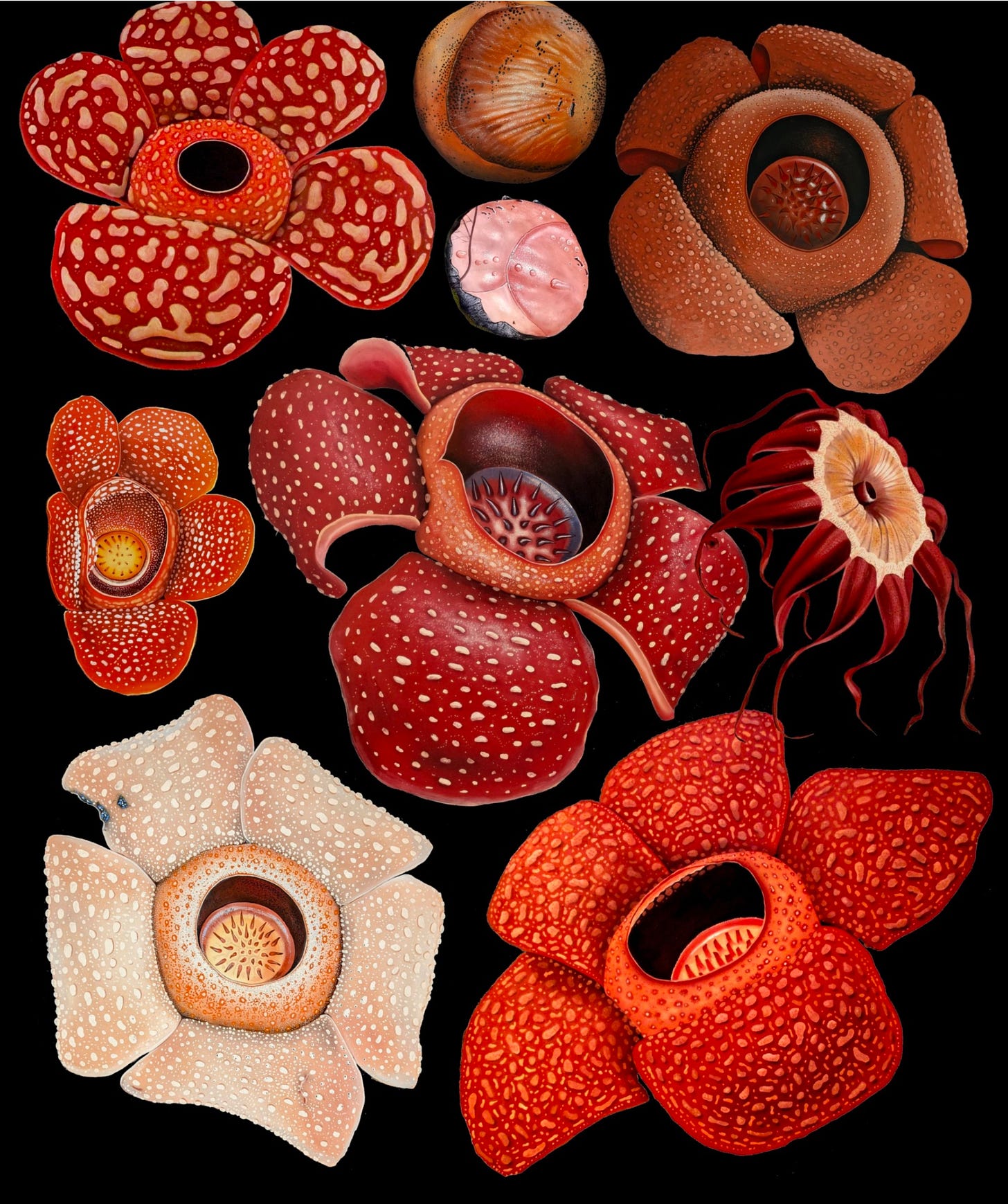The closest thing to magic?
Week 18's unexpected flower is Claret, Marshmallow, Signal Red & Amber
With just one week to go until the start of the Colori Flori Summit flowers have been on my mind a lot. One of the questions that popped up in my mind was “how big’s the biggest flower?”. Read on to find out!
You can still register for the Summit at it’s Early Bird price of only $78. This ends as soon as the first of fourteen lessons is released next Monday 12 May and pricing reverts to $98.
Colour Curious?
In the run up to Colori Flori I will be doing a three day long program of colour mixing with lessons shared here on Substack, look out for more info coming up in the next few days.
So, what is the largest flower in the world? It’s Rafflesia arnoldii which is often referred to as the "corpse flower" due to its distinctive and strong odour!
I came across an illustration of the flower by the botanist and botanical illustrator Chris Thorogood who works at the University of Oxford’s Botanical Garden, less than an hour away from my studio and now on my list of places to visit in May.
Chris’s passion is the biology of extraordinary plants such as Rafflesia and figuring out find ways to save them from extinction: most of its forty-odd species are threatened but the plant is proving challenging to protect: it grows naturally only in South East Asia, it’s seeds cannot be stored for long periods and it’s almost impossible to grow in other locations.
Here’s some facts about Rafflesia:
Its found primarily in the rainforests of Indonesia, Malaysia, Thailand and the Philippines
The flower can grow up to one meter (3ft) in diameter can weight up to eleven kilograms (24lb).
Despite its enormous size, Rafflesia has no leaves, roots or stem - it's a parasitic plant.
The flower blooms for less than a week before decomposing.
Rafflesia produces its potent odour to attract flies for pollination. It doesn’t have any pollen or nectar so other insects aren’t interested in it.
It has no chlorophyll and cannot photosynthesise, instead drawing all nutrients from its host vine
The plant is named after Sir Stamford Raffles, who discovered it in the Indonesian rainforest in 1818. He’s also famous for “founding” Singapore where you can still find the famous Raffles Hotel.
Take a look at all the different species here and watch a light interview with Thorogood on BBC Breakfast where he says that to him the flower is the “closest thing to magic”. You can find him on Instagram here.
“Rafflesia”, medium unknown, Chris Thorogood, from “Pathless Forest”, date unknown (book published 2025)
Colour Combination
The chosen colours this week are Claret, Marshmallow, Signal Red & Amber. Use the colours along with a contrasting dark and neutral light colour if you wish. Create an artwork in any medium or style.
I love seeing what you’ve create. If you’re posting on Instagram, please tag #coloricombo and #estemacleod and join us in the private Facebook group Creative Prompts.




Fascinating! I am surprised to learn they are flowers and not the fruiting body of a fungus. https://www.instagram.com/illustratingbotanist/ has an interesting video of painting one of these flowers in both oils and watercolours (In separate paintings of course) 🤩🌼